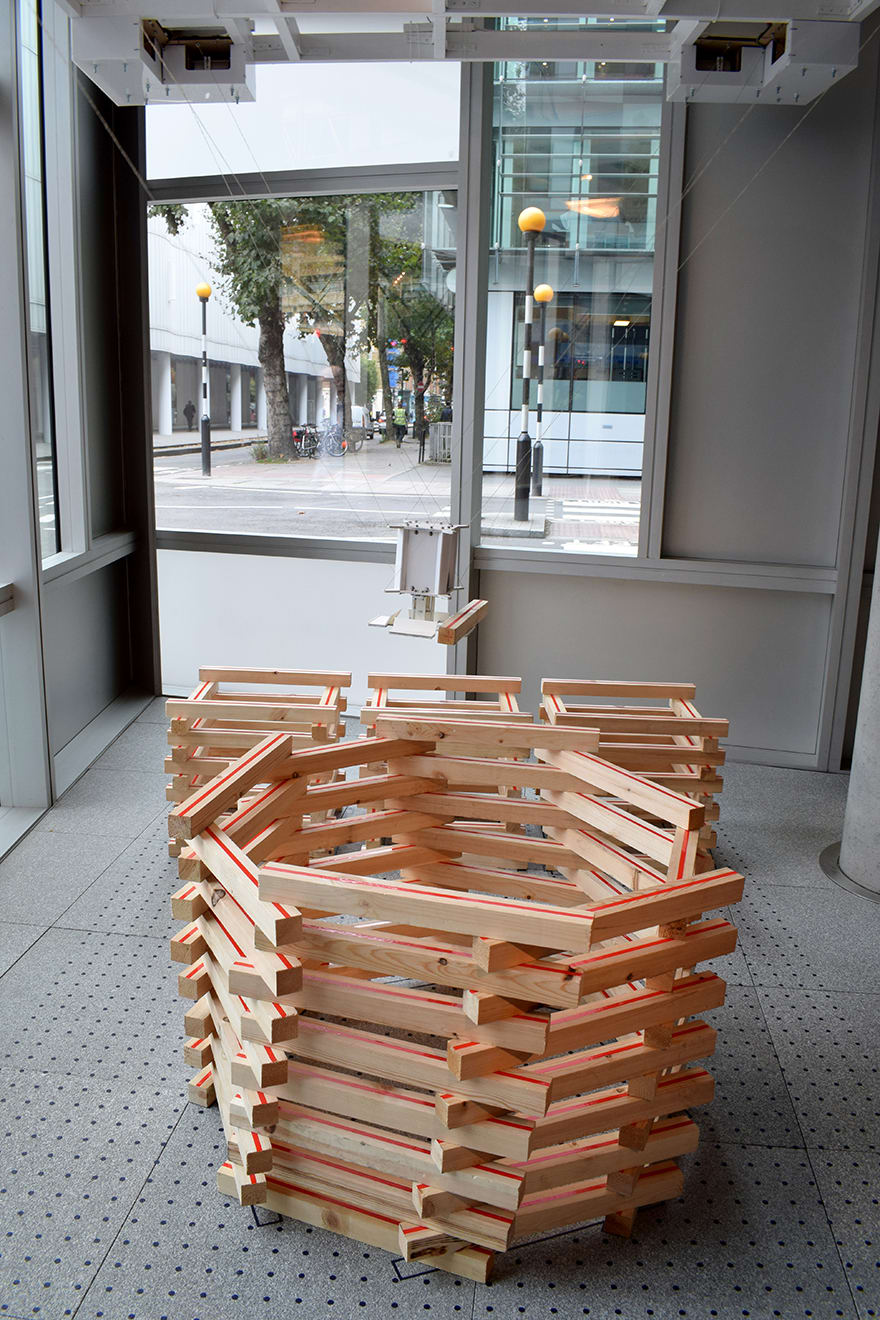A cable-stay intelligent robot that could provide the blueprint for eliminating cranes – and crane drivers – on building sites, forms the centrepiece of an exhibition curated by Arup in central London.
The DNA of Making, as the installation is called, has been developed by London-based architect Arthur Mamou-Mani, in conjunction with Arup’s Francis Archer and Andy Edge.
Operating from overhead cables, which it moves along in the same way as camera, the robot uses artificial intelligence (AI) to assemble and deconstruct predesigned two-metre high towers.
The robot is able to “learn” through the assembly process and placement of each wooden block, adjusting to any differences between the physical and “virtual” location of blocks stored on a digital 3D model. It uses a feedback loop to ensure that each block is placed accurately, avoiding any misplacements that could threaten the structural integrity of the tower.
The robot is part of Arup’s newly-curated “Artificial Intelligence – enabling machines to learn” which explores the future of robotics in the construction industry.
While the use of robots has grown, they are often located in one fixed position and limited in the range and volume of what they can build. The DNA of Making is a prototype of a cable robot: a more flexible and adaptable solution, which in the future could be scaled-up to the dimensions required by a typical building site and engineered to lift loads on par with a tower crane.

The robot is able to “learn” through the assembly process and placement of each wooden block
These robotic assemblers could offer many different possibilities, depending on the instructions they are given and how building components are arranged.
Andrew Edge, senior architect at Arup, said: “In the global race towards automation, the use of robots in the manufacturing process has significantly increased over the last few decades. The use of fixed-arm robots in car-making is well-established and commonplace across the industry. These static, fixed-arm robots have slowly been introduced into the construction process on small-scale projects and pavilion-type buildings.
“However, these are limited to what they can construct by the length of their flexible arm and fixed position. A more flexible, dynamic and responsive solution is required. One possible answer is cable robots”
Arthur Mamou-Mani, director of Mamou-Mani, added: “An entire construction site will need to be choreographed and understood. The construction site is typically arranged by a contractor, the difference is that architects will have no choice but to consider the sequence of assembly and disassembly in the digital models.”
Mamou-Mani said the prototype robot could lift 2kg blocks, and the next stage was to scale up the prototype and that eventually it could take the place of tower cranes, providing an intelligent automated lifting process.
“At the moment when you lift with a tower crane you still need people to help lift the load into position,” he said. “The cable stays that the robot is mounted on would be easy to install on gantries on the site.”
Architecture and design practice Mamou-Mani specialises in a new kind of pop-up, digital fabrication led architecture. Mamou-Mani has a fabrication facility called FabPub and strong experience in digital technology.
Nigel Tonks, group leader, Buildings London, at Arup said: “We are living in the age of the digital revolution. With the Internet of Things, open source and the World Wide Web, I believe we are now at the cusp of where AI and machine learning will begin to transform our industry”
The DNA of Making at 8 Fitzroy Street, is now open to the public, 09:00-18:00 Mondays-Fridays until Friday 12 January 2018
Comments
Comments are closed.












The cable-stayed crane is like the SkyCam used in NFL games to ‘fly’ all over the stadium. Its a very clever application for construction.